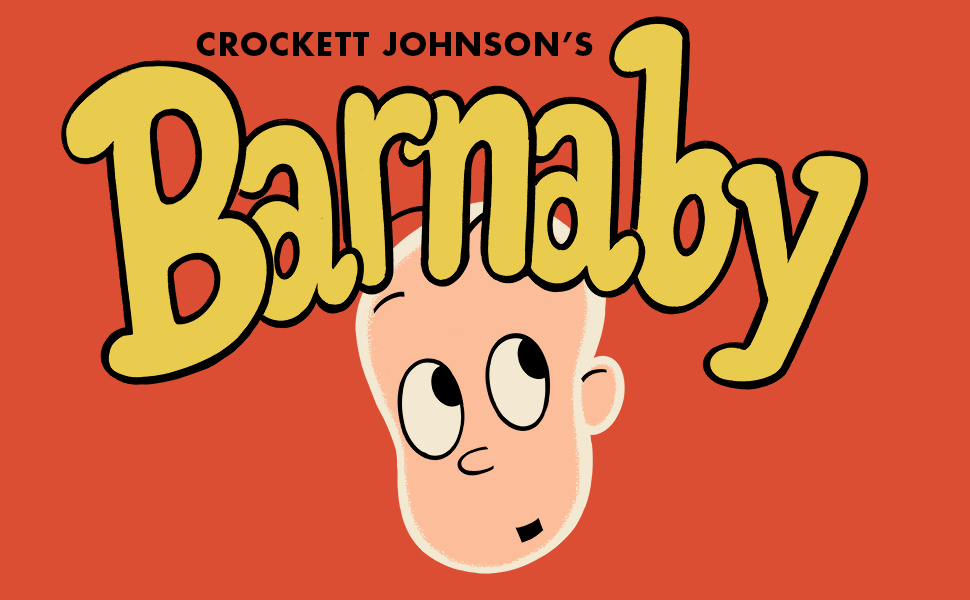I started reading comic strips (or having them read to me) at roughly the same time I started reading comic books. But in my youngest years, I was more familiar with comic strips (with the "Sunday funnies" coming into our house at the rate of once a week) than I was comic books (which I usually got once a year to read in the car during family vacations). I recently "discovered" Barnaby while catching up on reprints of Gasoline Alley in Comics Revue. Barnaby, by Crockett Johnson, originally ran from 1942 through 1952, and it is one of the few comic strips that has an actual ending. Johnson revived the strip in 1960 with retellings of the original strips. It is that revival I discovered while reading Comics Review.
In 2012, Fantagraphics Books began reprinting the original run of Barnaby, in its entirety, in five annual volumes. I don't know what I was doing on Free Comic Book Day that year, but Fantagraphics offering was a gratis issue and I missed it. (So much for my claims to be a discerning reader, ever on the prowl for the new, the different, the good.) The FCBD issue featured the first two strips from April 1942, as well as a sequence from January/February 1943 featuring "Gus the Ghost" and the first part of "The Hot Coffee Ring" (the second part to be found in Barnaby Vol. 1). Because this is the true "Golden Age of Comics," it wasn't too difficult for me to score a copy of this 13-year-old giveaway.
Barnaby is smart and clever, as popular with intellectuals as with hoi polloi. It is about a little boy and his imaginary (?) Fairy Godfather, Mr. O'Malley. From the 1960 revival (what little of it I was able to read, in which Barnaby's parents have taken him to see a child psychologist), I came to expect a precursor to Bill Watterson's Calvin & Hobbes, but the FCBD edition reads more like an episode of Little Orphan Annie, about gansters hijacking Barnaby's father's coffee trucks. Imagine! A "mash-up" of Little Orphan Annie with Calvin and Hobbes! Even in the current Golden Age, though, I have founf it difficult to obtain volumes of Fantagraphics' five-volume set. I was, however, able to score a copy of v5 for only $31 (cover pice $50).


Replies
A little diggression, if I may.
I nearly convinced myself that Barnaby is "Henry", the 1932 character by Carl Anderson that was published in comic books fairly often here in Brazil in the 1970s. They are very much distinct characters, but the face designs are not always easy to distinguish. I don't think either made a conscious attempt to emulate the other, but at first glance the style and sensibilities are not a million miles apart.
Far as I can find out, Barnaby was never published here in Brazil.
That's an interesting observation, Luis. Barnaby might also seem familiar to certain readers because Crockett Johnson also created the successful and enduring children's book series Harold and the Purple Crayon. Harold is a dead-ringer for Barnaby, but the similarities mostly end there, aside from Johnson's enduring wit and genius.
(Also, I will very likely have something to say about Henry if we ever get around to discussing 1963 Steve Canyon. What's the connection? Well, I don't want to get too far ahead of myself.)